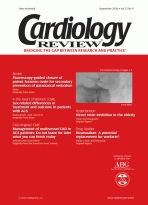Publication
Article
Cardiology Review® Online
Stable angina pectoris in women and men
Author(s):
Each municipality in Finland is responsible for arranging health care for its inhabitants.
Each municipality in Finland is responsible for arranging health care for its inhabitants.1 Most have switched from a primary health care system to a family doctor system. Each family doctor is responsible for about 2000 patients. The aim is for a patient to be able to contact his or her doctor and to have treatment needs assessed within 3 working days. This system has proved very successful. Benefits of long-term treatment relationships include a reduced need for hospital examinations. This has helped to reduce health care costs.
Health services are available to all citizens in Finland, regardless of their financial situation. Public health services are mainly financed from tax revenues—partly municipal tax, partly state tax. Finland spends less than 7% of its gross national product on health care. This is one of the lowest percentages among European Union member states. The public sector finances 76% of total health care expenditures, users of services finance 20%, and others finance 4%. The decline in public sector health care expenditures in recent years has led to increases in costs to households.
Private medical treatment supplements the care provided by municipalities and the state. Particularly in cities, many doctors, dentists, and physiotherapists offer private care. There are also a few small private hospitals. Only about 8% of Finnish doctors earn their living solely as private practitioners. However, about one third of doctors run a private practice in addition to working in a hospital or health center. Everyone in Finland is covered by obligatory sickness insurance, funded through taxes by the state, municipalities, employers, and the insured population. The sickness insurance scheme reimburses fees paid by patients to private doctors, costs of medicines prescribed, and transportation costs arising from the treatment of illness. By far, the greatest expenditure in relation to health insurance is compensation for sick leave and parental leave.
The life expectancy for individuals born today is 81 years for girls and 73 years for boys. The life expectancy of Finnish men is deteriorated by cardiovascular disease, excessive consumption of alcohol, and accidents. Cardiovascular mortality has declined in response to effective health and nutritional education in recent decades, but excessive blood cholesterol levels and obesity remain common in Finland. Smoking and drug abuse, however, are significantly less frequent in Finland than in Europe, on average.
Cardiology Review
In this issue of Hemingway and colleagues describe angina among men and women in Finland. Their article is a remarkable contribution in that it is a study of a symptom and its consequences in an entire population. Their main point is that angina should not be considered a “soft diagnosis” in women because standardized mortality ratios (SMRs) for women and men with angina were similar. SMR is the ratio of observed to expected deaths, the latter being calculated from age, sex, and calendar year-specific coronary mortality rates from the total Finnish population. However, if one examines absolute death rates, they are very low for young women with angina, particularly “nitrate angina.” This, then, is a restatement of the problem of managing a low-prevalence, but potentially dangerous, disease (coronary heart disease) that most often presents in women as a rather nonspecific symptom (angina).
Although helpful from an epidemiologic perspective, SMRs are not of particular value to the clinician trying to sort through the meaning of the clinical presentation. For example, in the article, Figure 2 shows that SMRs for angina decline with increasing age, whereas in clinical practice, the positive predictive value and prognostic implications of angina increase dramatically with age. Certainly, the presence of diabetes should raise the index of suspicion that chest pain in a woman of any age is a manifestation of coronary heart disease. Test-positive angina can do the same. But to use those tests cost effectively, the clinician must incorporate patient age, sex, symptoms, and conventional risk factors into an estimate of pretest disease likelihood. Bayes’ theorem revisited. To conclude, Hemingway and colleagues should be congratulated for an excellent population study, as should the people of Finland for their health care delivery and reporting system.






